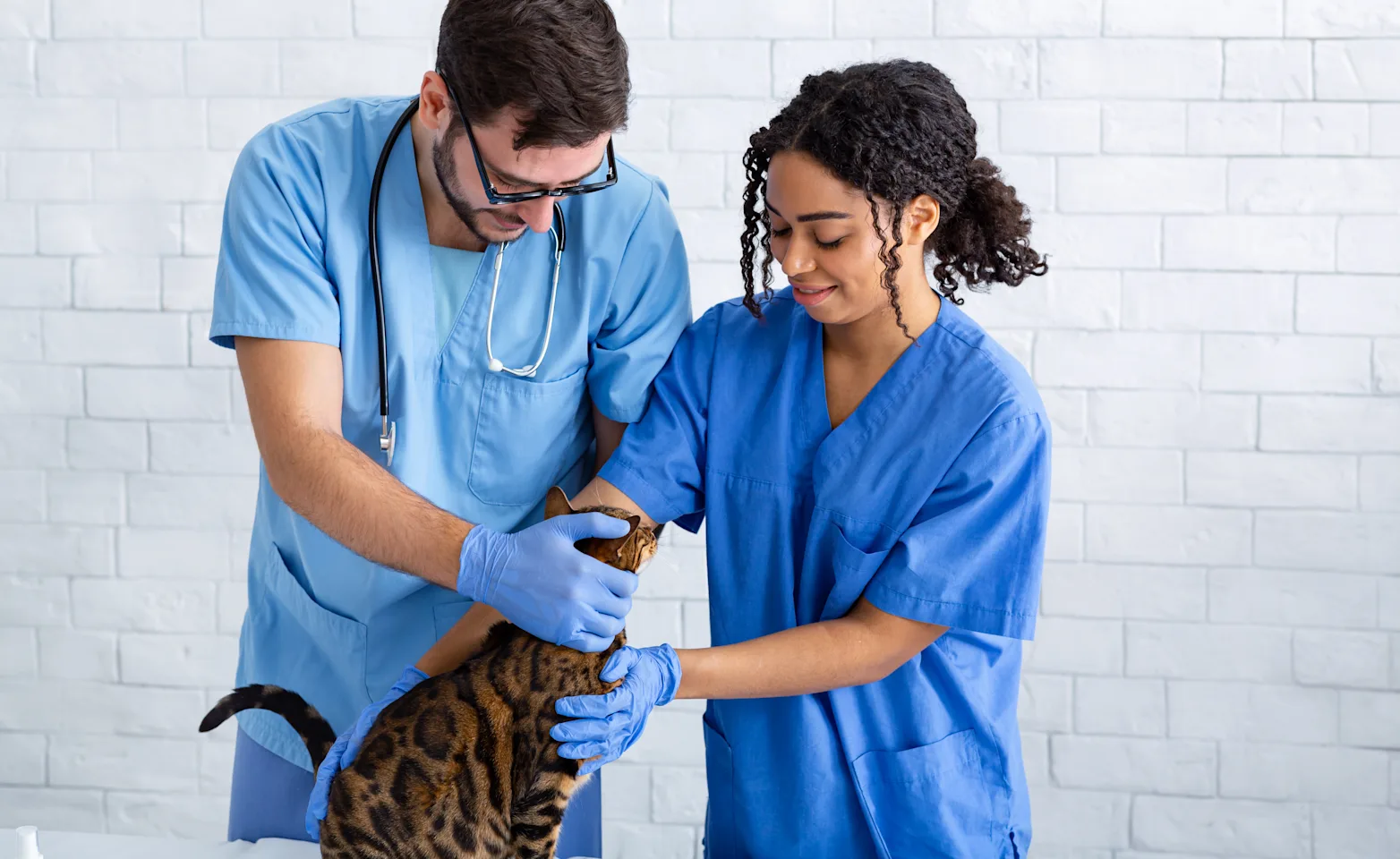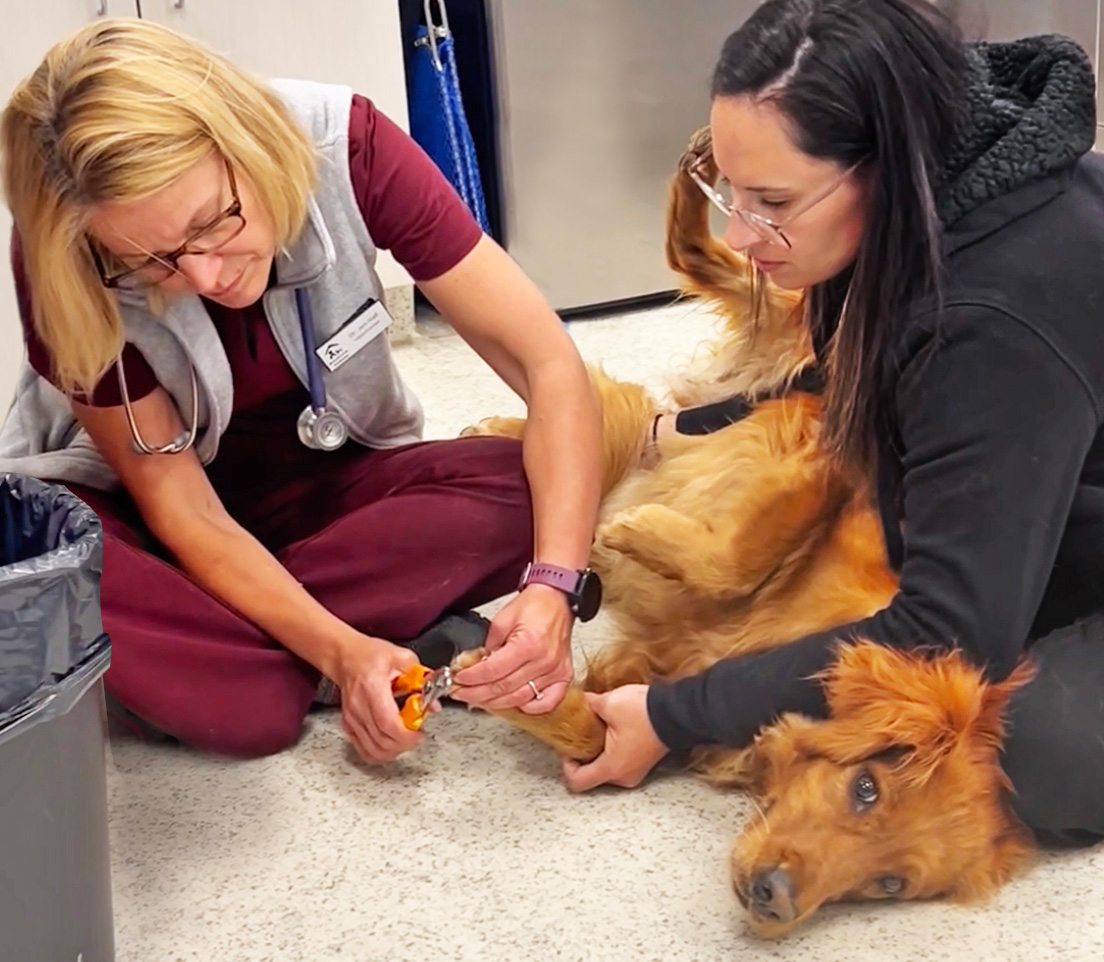Warning Signs That Warrant an Immediate Visit to a 24 hour vet near me
Warning Signs That Warrant an Immediate Visit to a 24 hour vet near me
Blog Article
All About Veterinarian Surgical Treatment: Recognizing the Importance of Professional Look After Your Pet dogs
Veterinary surgery is a critical part of animal health care. It incorporates different procedures, from regular elective surgeries to immediate interventions. Recognizing the complexities of these surgeries can help animal owners make notified decisions. The preparation, execution, and recovery phases are essential for making certain the well-being of pets. With appropriate expertise, owners can browse the complexities of veterinary treatment. What variables should be taken into consideration prior to a pet dog undertakes surgical treatment?
Types of Vet Surgeries
When a family pet requires medical intervention, understanding the different kinds of veterinarian surgical procedures can help pet owners make educated choices. Vet surgical treatments can be generally categorized right into three primary types: optional, immediate, and emergency surgical treatments. Optional surgical treatments, such as spaying or neutering, are prepared procedures that are not immediately life-threatening. Urgent surgical procedures, like those for international body elimination, have to be carried out soon but are not lethal in the moment. Emergency surgical procedures, such as those resolving extreme trauma or internal bleeding, are critical and call for prompt attention.Additionally, surgical procedures can differ in intricacy, varying from minimally intrusive laparoscopic treatments to a lot more comprehensive open surgical procedures. Each kind of surgery lugs its own dangers and recuperation processes. Understanding these groups enables pet owners to take part in meaningful conversations with veterinarians, resulting in better results for their precious animals.
Planning for Your Pet dog's Surgical procedure
Planning for a pet dog's surgical procedure includes a complete list to ensure all fundamentals are covered. Efficient communication with the vet is vital for comprehending the procedure and any kind of required pre-operative actions - canine tplo surgery. Additionally, having clear post-operative treatment guidelines will certainly help owners supply the best support for their recuperating pet dogs
Pre-Surgery List Essentials
Ensuring a smooth surgical experience for an animal needs careful prep work and attention to information. A pre-surgery checklist is essential for pet dog proprietors to follow. First, confirming the arranged surgery day and time is vital. Proprietors need to additionally validate that their family pet has actually fasted according to the vet's guidelines, usually for 8-12 hours prior to surgical treatment. Collecting necessary clinical records, consisting of vaccination background, is essential for the vet's evaluation. It is additionally recommended to prepare a comfortable area in the house for the pet's recuperation after surgical procedure. Proprietors need to have a strategy for transportation to and from the veterinary facility, making certain that the pet dog is safe and secure and comfortable throughout the trip. Adhering to these actions can greatly enhance the medical experience.
Interacting With Your Veterinarian

Reliable communication with the vet is essential for a successful surgical experience for animals. Proprietors must be prepared to discuss their pet dog's case history, including any kind of pre-existing problems, medicines, and allergic reactions. This info assists the vet analyze risks and tailor the surgical plan as necessary. In addition, animal proprietors should ask inquiries pertaining to the procedure, anesthesia, and expected end results to ensure they completely recognize the procedure. Clearing up any type of doubts can relieve anxiety for both the pet dog and the proprietor. It is likewise essential to communicate any kind of behavior modifications or problems observed in the pet dog leading up to the surgery. Ultimately, clear dialogue promotes count on and partnership, making certain that animals get the finest possible treatment throughout their medical trip.
Post-Operative Treatment Directions
After talking about the operation with the vet, family pet proprietors must concentrate on post-operative treatment directions to facilitate a smooth recovery for their pet dogs. These directions generally consist of keeping an eye on the medical site for signs of infection, such as redness or discharge. Family pets might require to be kept one's cool and constrained to avoid excessive motion that can interrupt healing. Discomfort management is important, so proprietors should comply with the vet's guidance on carrying out medicines. In addition, nutritional limitations might be suggested to avoid intestinal upset. Normal follow-up visits are essential to ensure correct recovery and address any problems. By adhering to these post-operative treatment guidelines, pet dog owners can greatly add to their family pet's healing and general well-being.
The Surgical Refine Explained
The medical procedure for pet dogs incorporates vital actions that assure their safety and security and recuperation. Pre-surgery prep work are necessary for reducing risks, while post-operative treatment standards play an essential role in promoting recovery. Understanding these elements assists pet dog proprietors navigate the surgical experience better.
Pre-Surgery Preparations
Before an animal undergoes surgical treatment, a number of essential prep work need to take area to ensure a secure and successful treatment. A detailed vet evaluation is crucial to examine the family pet's total health and wellness and recognize any type of potential dangers. This may include blood examinations, imaging, or other diagnostics. The vet will certainly also discuss anesthesia options tailored to the animal's particular requirements. Furthermore, pet proprietors are generally advised to keep food and water for a specified time prior to surgery to minimize the threat of difficulties during anesthesia. It is very important for owners to give a complete case history, consisting of any kind of drugs or allergic reactions, guaranteeing the medical team has all necessary info. Appropriate interaction and adherence to pre-surgery standards can substantially improve vet doctor near me the outcome of the treatment.
Post-Operative Care Guidelines
Appropriate post-operative care is crucial for making certain a pet dog's healing adhering to surgical procedure. After the treatment, family pets must be kept an eye on very closely for any type of signs of difficulties, such as too much bleeding, swelling, or unusual habits. It is necessary to adhere to the vet's directions regarding drugs, including painkiller and anti-biotics. Pet dogs should be kept in a quiet, comfortable atmosphere to lower stress and promote recovery. Restricting task is essential; short, leashed walks might be essential, yet jumping or running ought to be prevented. Normal follow-up consultations should be scheduled to assess the recovery process. Furthermore, the surgical website has to be maintained tidy and dry, with any type of signs of infection reported to a veterinarian promptly. Adhering to these guidelines enhances healing end results.
Anesthesia and Discomfort Monitoring
Reliable anesthetic and discomfort monitoring are essential elements of vet surgical treatment, making sure that family pets continue to be comfy and secure throughout the treatment. Vets analyze each family pet's individual requirements, taking into consideration variables such as age, weight, health standing, and the kind of surgical treatment being performed.Anesthesia protocols commonly consist of a combination of pre-anesthetic medications, induction representatives, and inhalant anesthetics, permitting specific control over the animal's level of awareness. Monitoring during surgical procedure is crucial; vets continuously observe important indications to resolve any type of potential complications promptly.Pain management approaches may involve opioids, non-steroidal anti-inflammatory medicines (NSAIDs), and anesthetics, tailored to the pet's specific situation. This diverse technique assists minimize discomfort and promotes a smoother medical experience. By focusing on efficient anesthetic and discomfort management, veterinary professionals improve the total well-being of family pets undertaking operations, ensuring they get the highest standard of care.
Post-Operative Care and Recuperation
Following surgery, the focus changes to post-operative care and recuperation, which is vital for making certain a pet's risk-free return to regular tasks. During this duration, pet dogs need a quiet, comfortable environment to help recovery. Proprietors must carefully check their pet dogs for any signs of discomfort or uncommon behavior.Veterinary guidelines often include certain guidelines connected to medicine administration, wound treatment, and dietary adjustments. It is crucial to follow these recommendations to lessen complications and promote recovery. Family pets might require to be limited from energetic tasks, such as running or leaping, during their healing period (canine tplo surgery).Regular follow-up consultations with the veterinarian enable surveillance of the pet's progression and prompt modifications to the treatment plan. Giving emotional support and friendship can likewise enhance an animal's healing experience, assisting to relieve tension and anxiousness. Overall, thorough post-operative care plays a significant duty in accomplishing an effective healing
Recognizing Issues After Surgical Treatment
How can pet owners determine issues after surgery? Understanding of particular indicators is crucial for guaranteeing the wellness of family pets during recuperation. Usual indicators include extreme swelling, inflammation, or discharge at the surgical website, which might signify infection. In addition, persistent pain, suggested by whimpering or unwillingness to relocate, should motivate instant focus. Adjustments my website in appetite or water intake can additionally indicate complications; a decrease in these actions may indicate discomfort or distress.Moreover, animal owners ought to monitor their animals for any uncommon behavior, such as sleepiness or problem breathing, as these can be signs of major issues. Throwing up or diarrhea following surgical procedure might require immediate veterinary evaluation. Identifying these issues early can significantly influence an animal's recovery process, emphasizing the relevance of vigilance and punctual communication with a vet for any type of worrying signs.
The Function of Veterinary Experts in Surgical Care
Veterinary professionals play an important role in making certain the safety and success of operations for pets, specifically complying with surgical treatment when keeping track of and treatment are critical. These professionals include vets, veterinary service technicians, and support staff, all of whom add specialized skills to the medical process.Before surgical procedure, vets perform extensive assessments to assess the moved here family pet's health, making certain that any type of underlying conditions are taken care of. During the treatment, the surgical team provides anesthesia, preserves clean and sterile atmospheres, and keeps track of essential indications, all essential for decreasing risks.Post-operative care is equally substantial; veterinary specialists observe for complications, handle pain, and guide owners on recovery practices. Their proficiency enables them to identify early signs of distress or infection, making sure timely intervention. Inevitably, the collaborative efforts of vet professionals in surgical treatment foster a secure setting, advertising the health of pets throughout the medical journey.

Often Asked Inquiries
How Do I Pick the Right Veterinary Specialist for My Family pet?
Picking the appropriate vet doctor entails investigating certifications, checking out testimonials, and reviewing the clinic's atmosphere. It is important to assess the surgeon's experience with specific treatments and their interaction design when choosing.
What Are Usual Misconceptions About Vet Surgeries?
Typical false impressions about veterinarian surgical procedures consist of ideas that they are constantly high-risk, unnecessary, or for emergencies. Lots of animal proprietors ignore the advantages of preventive treatments and the ability entailed in veterinary surgical care.
How Much Will My Pet dog's Surgical procedure Cost?
The price of a pet's surgery can vary substantially based on aspects such as the type of treatment, the vet's experience, and geographic place (24 hour vet near me). Commonly, expenditures vary from a few hundred to a number of thousand dollars

Can My Family Pet Consume Prior To Surgical Procedure?
Before surgical treatment, it is generally advised that family pets avoid consuming for a particular duration. This fasting aids decrease the danger of difficulties during anesthesia. Proprietors must consult their veterinarian for precise guidelines customized to their pet's demands.
Suppose My Family Pet Has Pre-Existing Wellness Issues?
When a pet has pre-existing health and wellness conditions, it's crucial for the vet to assess these variables before surgical treatment. This examination assurances proper safety measures are taken, decreasing threats and optimizing the family pet's total safety and security during the procedure.
Report this page